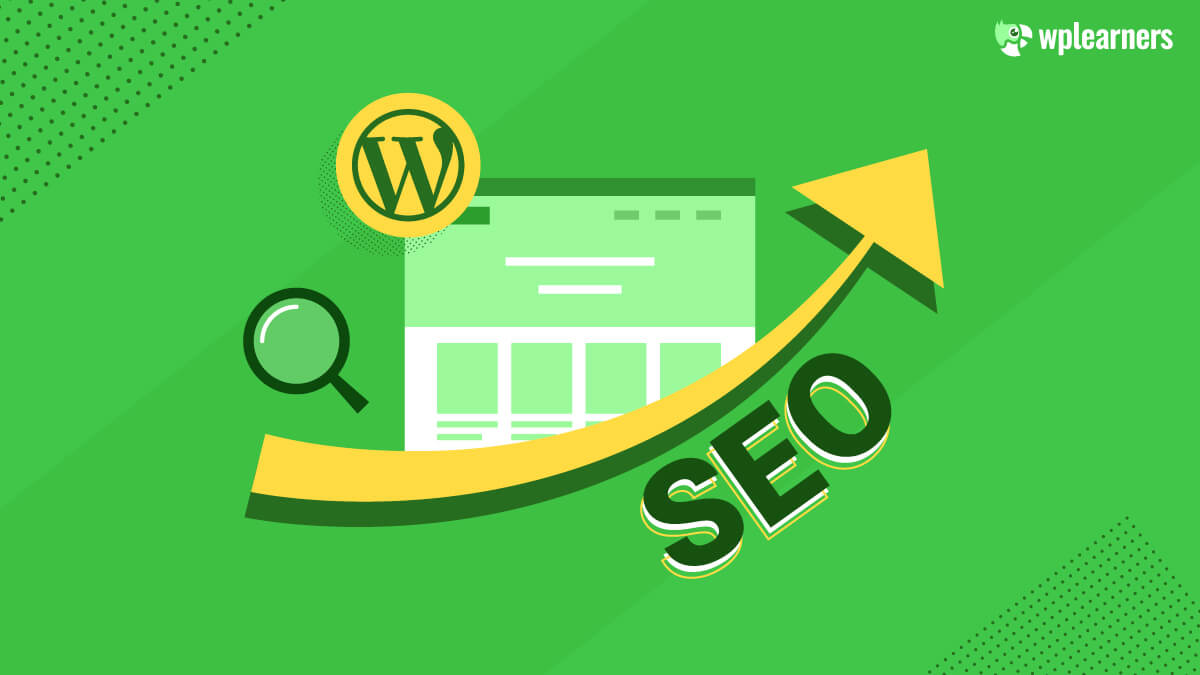WordPress is the most popular content management system (CMS) out there for a good reason: it’s easy to use and search engine optimized (SEO) right out of the box.
Both of these statements are correct; nevertheless, it must be borne in mind that WordPress is only a content management system (CMS). Therefore, WordPress won’t automatically boost your site’s position in search results. So, don’t just hurry on installing WordPress and make your way through, you need to understand the basics of WordPress SEO.
Fortunately, many SEO recommended practices are easy to execute on WordPress sites.
This article will cover all the essential WordPress SEO best practices. But before going to the nitty-gritty details, let’s first know the basics.
What Is WordPress?

In 2003, WordPress was a blogging platform. However, it has since evolved into a robust and adaptable solution for running full websites. As a result, WordPress is the most widely used CMS in the world, powering over 35% of all websites and several of the most visited sites on the web.
What Is SEO?
SEO, or search engine optimization, is a technique for influencing the visibility and ranking of a website in search engines. To increase the quality and number of visitors to your website, you need a decent SEO strategy since organic search is the primary means through which people find and access online information.
What Is WordPress SEO?
While it’s true that using WordPress as your content management system (CMS) will save you time and make it easier to follow SEO best practices even if you don’t have any prior experience. You should still be aware that you’ll need to work to see actual results on the search engine results pages (SERPs).
Unless your site has serious technical flaws that prevent it from crawling and indexing, the CMS you choose will not affect how well your site ranks. You shouldn’t expect WordPress to do all the work; it will take time and dedication.
Although search engine optimization (SEO) can rapidly become complex, the intuitive interface of WordPress makes it accessible to even individuals who don’t consider themselves technically savvy.
Using WordPress won’t need a shift in strategy regarding search engine optimization. However, providing high-quality content, building authoritative links, and checking for and fixing any technical problems slowing down your site’s performance are still essential.
However, WordPress already handles many of the SEO fundamentals that boost your site’s rank. The following are tips and methods for implementing growth-driving strategies on the platform.
Importance of SEO: The Basics
Optimize your WordPress site and its content. You will be more visible to individuals seeking information about services and goods like yours. When you do this, search engines like Google and others will find your material naturally and display it higher in relevant searches without you having to pay further fees.
High-quality, naturally-occurring content on your website will help increase its perceived credibility and authority in the eyes of your target audience.
Suppose you own a company and a website. In that case, you should work on your SEO since it is one of the easiest and most successful ways to boost your online visibility, which will raise your leads, conversions, and revenue.
Importance of SEO: The Details
Here are the three components of our definition of SEO that will help you understand its significance:
Organic Search Results
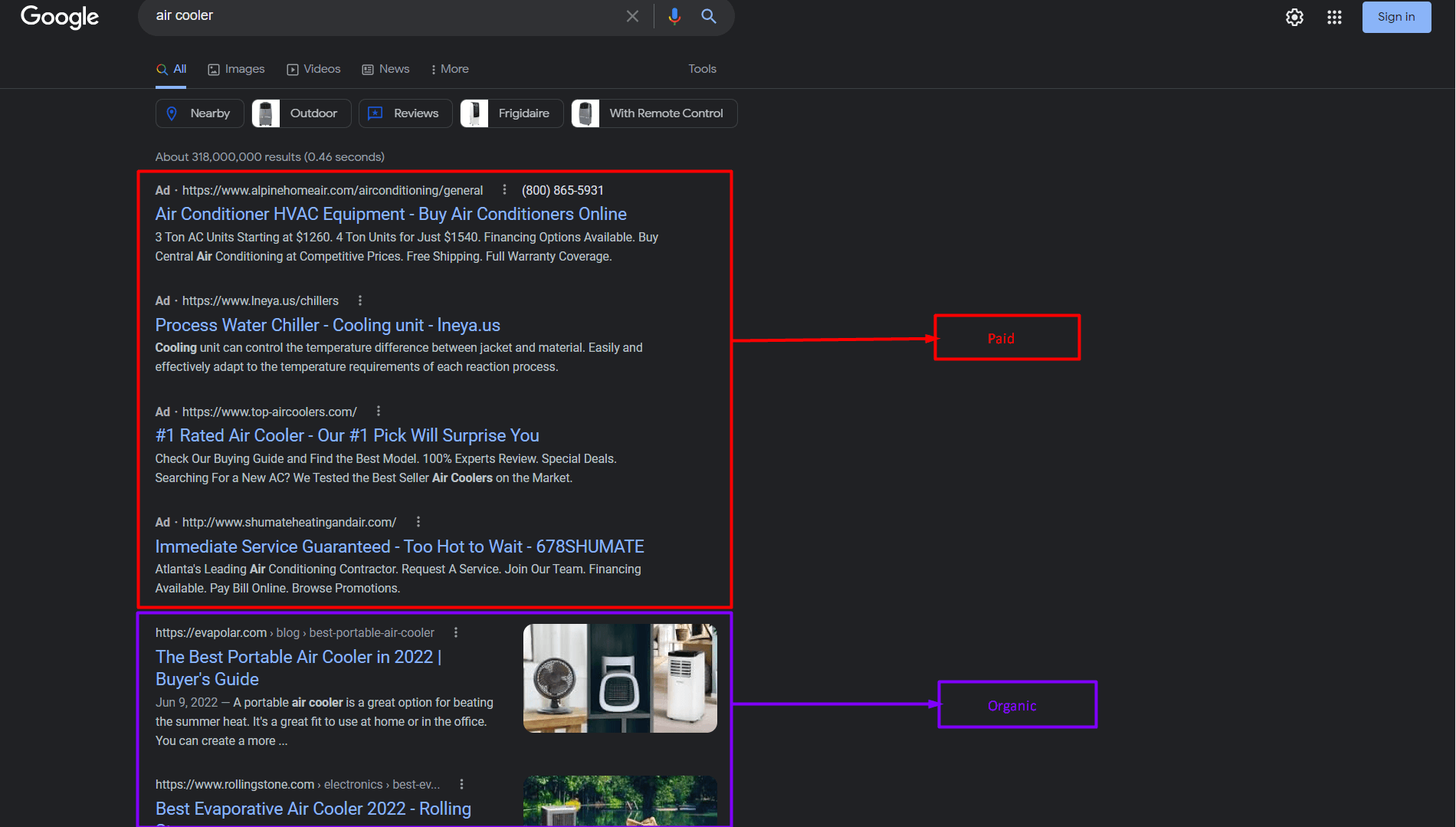
What appears at the top of a SERP (Search Engine Results Page) that the search engine itself has determined to be the most relevant to the user’s query regardless of whether or not the site paid to be there.
Advertisements (specifically, PPC or pay-per-click advertisements) take up a significant section of many search engine results pages.
The search engine ranks organic search results based on factors other than advertising bids to differentiate itself from paid results. Your page won’t rise in the organic search results if you pay to boost its position.
Organic Traffic: Quantity
Another aspect is the number of visitors that found your website via “natural” search engine results. When users search, they are more likely to click on results closer to the top of the search engine results page (SERP).
Therefore, you can expect a rise in profitable conversions proportional to the number of high-quality visitors you bring to your site, if you do a proper implementation of the WordPress SEO.
Organic Traffic: Quality
The relevance of your site’s content to a user’s search is also crucial. The only kind of traffic that counts as “high quality” comes from people interested in the material, services, or tools you provide. Excellent search engine optimization (SEO) takes full use of the search engine’s efforts to provide meaningful results to the user’s search query.
WordPress SEO – The Rundown
Now that we shared the basics let’s move on to the details.
SEO Best Practices
Most searches (75%, to be exact) never go beyond the first page of results found in research. This highlights the importance of making it to the top page of Google’s search results.
Search engine optimization best practices are a great way to make a good impression. Google defines SEO best practices as actions that improve search engine crawl-ability, indexing, and readability.
Here are some of the most crucial ones to remember.
Optimizing Content
Your content is your website’s most valuable asset. If your content isn’t up to snuff, it won’t matter how well-organized or quickly your site loads or how many safeguards you have in place.
It would be best if you first created something of value for your audience before optimizing it for them.
To do this, you must be familiar with the challenges faced by your target market and how your offerings might help them.
Once you have this knowledge, you can use it to create engaging material, such as films, blogs, and infographics, about the solutions you’ve developed.
Reviewing Link Profile
Recent studies have shown that links continue to be the essential ranking indicator for organic rankings in specific geographic regions.
Local search engine rankings are significantly associated with factors like the quantity and quality of connecting sites and the optimization of link anchor text.
Natural link building is a process that requires time and effort, but you can get started with these easy steps:
Quality Over Quantity
The amount of domains, IP addresses, and C-blocks that link to your website is significant. However, a single high-quality backlink from an industry leader in your sector is significantly more valuable than hundreds of irrelevant, low-quality connections. Find and remove low-quality connections with the help of link tracking tools.
Finding & Fixing Broken Links
Use plugins that check for broken links so you can fix them. These plugins will scan the post, page, and comment for broken links.
Optimizing Anchor Text
Include the name of your city in a part of your anchor text to improve its rank in local results (local SEO). Just try not to get your hopes up too high.
There is no “right” proportion of location-optimized anchors; instead, you should research the standard in your industry.
Identifying Potential Link Building Opportunities
Link-building possibilities can be identified by using a competitive research tool to identify sites related to your sector but linked to your rivals instead of you.
Speeding Up Website
Suppose you want to outrank your rivals in local search. In that case, you must ensure that your site loads as quickly as possible since site speed is still one of Google’s most critical “technical” ranking criteria.
Steps you should use includes:
Compressing Large Images
The main culprit for slowing down websites is large image files. However, the photographs you upload can be compressed and optimized with the help of a plugin.
Clean up Your WordPress Theme
Take away the old stuff on the page (e.g., unneeded database calls, functions, JavaScript, etc.). Also, remove outdated templates from your site since hackers might exploit them.
Reduce Server Load With a Caching Plugin
Caching plugins generate static HTML copies of dynamic sites to lessen the strain on the server. There is a wide range of alternatives to think about.
Don’t Use too much Plugin
You can find a plugin to do almost any task, but prioritize those that provide genuine value to your website. If you use a lot of plugins, your site will become unresponsive.
Alternatively, you might save time and effort by purchasing website auditing software. Good tools will examine several aspects of your page load time and provide recommendations to help you improve your site’s performance.
Optimizing for Mobile
Many prospective clients use their mobile devices to hunt for companies like yours. In addition, Google gives mobile sites more priority in its index than their desktop equivalents, thus emphasizing the need for mobile optimization.
Focusing on page speed and image compression is the most important thing you can do to optimize your mobile site, but here are a few additional things to keep in mind:
Using Responsive Theme
A WordPress theme that adapts to different screen sizes is a bare minimum need for mobile users. So, using a theme perfectly adapts every device and their screen size is a must.
Launching App
A recent survey found that app use accounted for 88% of all mobile media consumption. The most popular applications among mobile users are those that allow them to interact with their favorite companies in depth.
Creating Accelerated Mobile Pages
Web pages built with AMP (Accelerated Mobile Pages) technology load very quickly on mobile devices. If you utilize the AMP plugin that comes standard with WordPress, your pages will rank higher in mobile search results.
Integrating Google My Business
Many important aspects of local search rankings are included in Google My Business. Your search engine results page (SERP) ranking is influenced by various factors, including location, user ratings, and the content of your business’s description and categories.
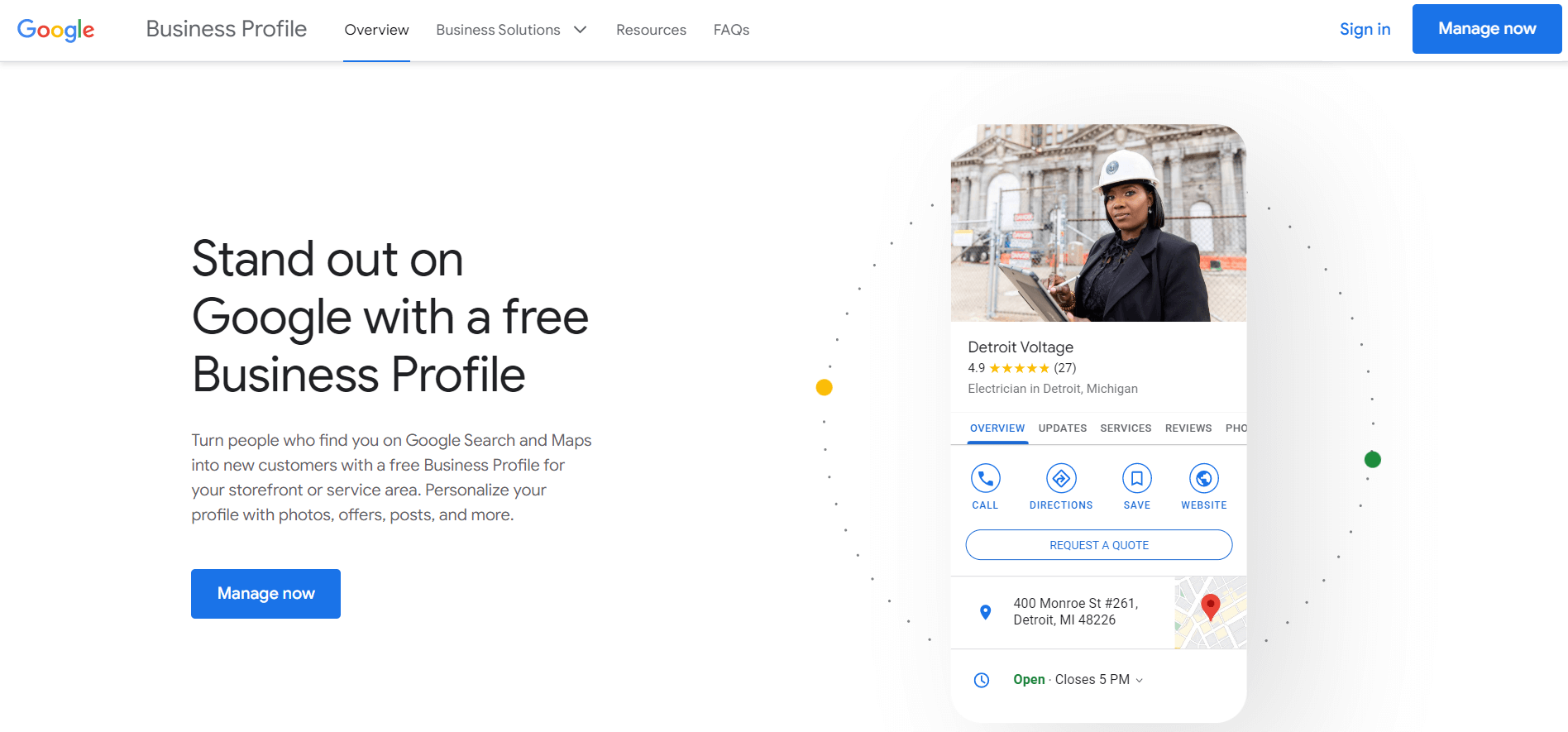
Add your WordPress site and other pertinent details (such as your business’s hours and a description) to your GMB profile after you’ve claimed your page.
The next step is to hunt for plugins and widgets that will let you bring essential ranking signals, such as images, a company map, and customer reviews, across from your GMB page to your website.
You also need to install a plugin, such as the Google Places Reviews plugin, that allows you to embed your GMB review on your WordPress site. Again, the confidence of your customers will grow as a result of this.
Also, you may want to think about embedding an unmovable company map on your site via a plugin or widget. Customers will be able to discover you more easily if you make use of tools like Google Maps Builder.
Adding Structured Data
Have you ever wondered why some local company listings look so full while others seem so empty? The key distinction is the presence of structured data.
You can provide Google with more details about your company using a plugin like Schema.
When clients discover you on search engine results pages (SERPs), they will access more information, such as your business’s hours of operation, pricing range, and exact location.
While it’s true that adding more detail to your descriptions won’t magically boost your search engine rankings, it can increase your click-through rates, which in turn can affect your position in Google and other search engines.
Including Location Keywords and Permalink
In terms of search engine rankings, URL format is mainly disregarded.
However, putting geographical keywords in your URL might enhance the user experience regarding local searches.
This is very important if you have many landing pages for various regions and want to reassure your visitors that they have arrived at the correct one.
In earlier versions of WordPress, customizing your permalink structure was not as easy as it is now. The permalinks all looked like this, and they were called ugly:
http://example.com/?p=5671.
Newer versions of WordPress, however, use “beautiful permalinks” by default, which contain the post’s name and date. They might resemble the following:
http://example.com/2022/06/05/test-post/.
To modify how WordPress generates URLs for posts and pages, visit Settings -> Permalinks in your dashboard. There, you can choose Custom Structure to specify a geographic region in the URLs of your landing pages.
Optimization Guide for WordPress SEO
With the help of the following instruction, you can significantly enhance your WordPress site’s search engine optimization (SEO), organic traffic, and search engine authority.
Checking WordPress Visibility Settings
Verify your WordPress settings for public access. There’s an option in the program that lets you make your site invisible to search engines. In cases when you’re revamping or reworking your site and don’t want people to witness the development, this feature might come in useful.

Ensure you haven’t left this function on by mistake or forgotten about it after finishing your website. You will not see any results from your SEO efforts while active.
Changing Permalinks
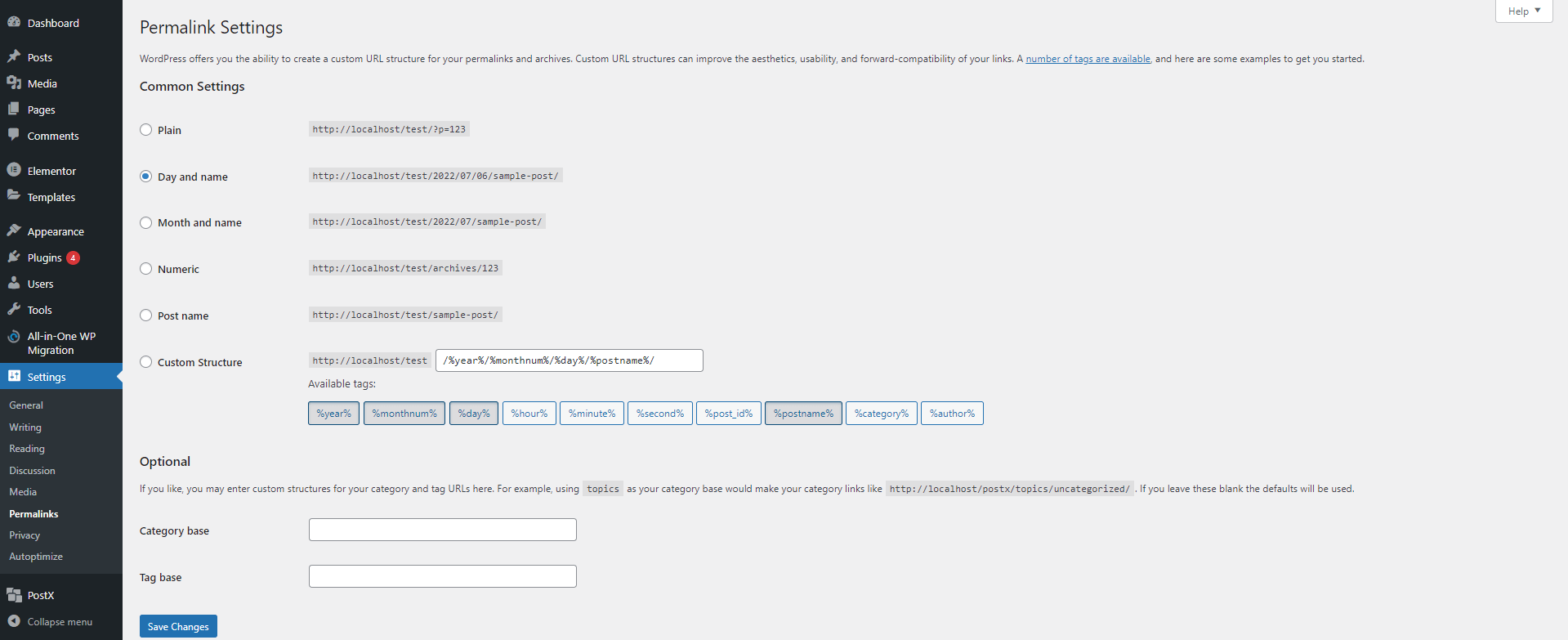
A permanent URL to a particular page, article, or blog on your website is known as a permalink. With a descriptive permalink, readers will know exactly what they’re getting into when they click on your article, page, or blog.
It would be best if you modified your permalinks to boost user experience and search engine optimization. Search engines utilize permalinks to assess whether your site is relevant to a user’s query.
If you have a website to share WordPress related tutorials, and have a specific page which provides a guide to start WordPress Blogs, the URL might look like this: www.wplearners.com/how-to-start-a-wordpress-blog-with-zero-experience/
To make your permalinks reflect the actual structure of your site, go to the “Settings” section of your WordPress dashboard and then choose “Permalinks.”
When you’re finished making changes, choose “Save Changes.”
Using Tags and Categories
Tags and categories allow you to separate your website’s pages and blog posts into specific and broad groups. This improves your SEO because it allows search engines to understand your website’s structure and the content your website actually contains.
Tags and categories also improve user experience by allowing visitors to find the content quickly they’re searching for and make it easier for you to manage all your website content.
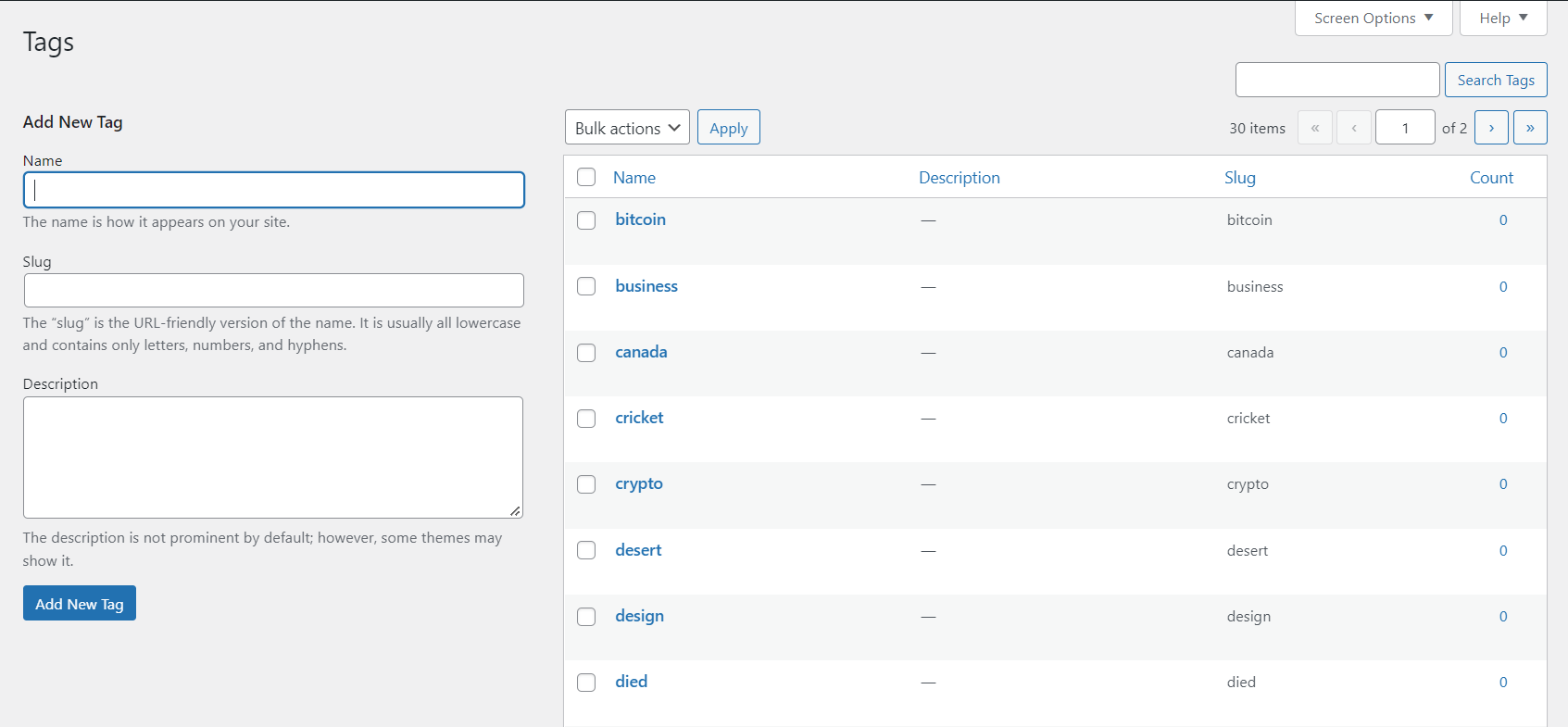
Tags are similar to keywords in that they can be used to describe the content of a page or post.

Categories allow you to organize your pages and articles into broader topics.
Choosing SEO Plugin
Plugins for the content management system WordPress extend the functionality of your website by incorporating new capabilities that aren’t included by default. There are thousands upon thousands of plugins to choose from, many of which can aid your search engine optimization efforts.
Suppose you haven’t yet decided on a plugin for your site. In that case, you can browse the WordPress plugin library for suitable possibilities. Once you’ve downloaded and installed your preferred WordPress plugin, you can start instantly enhancing your SEO.
To WWW or Not to WWW

Websites can be accessed in one of two ways: with or without the “www” prefix in the URL, so the search will look like this: test.com or without it, so the search will look like this: test.com.
And with the “www” prefix in the URL, the search will look like this: www.test.com.

You can only have one of these URLs (also known as “official domain names”), and using both will confuse search engines. There is no correct answer; whatever you choose will not impact your search engine rankings.
Once you’ve settled on a course of action, you should stay with it so that you can start boosting your site’s search engine optimization. To achieve this, provide links to your official domain name in internal and external communications like email and social media.
Search engines are more likely to give you a better rating when you maintain a stable domain and link to it often. Also, your site visitors would appreciate the convenience.
Navigate to the “Settings” menu in your WordPress admin to access the form fields for your URL.
Using XML Sitemaps
Each page of your website can be accessed using a code file called an XML sitemap on your server. Therefore, creating an XML sitemap can improve your site’s visibility in search engine results.
Unless you have substantial coding skills and experience, an SEO plugin that generates XML sitemaps automatically is your best bet for creating a sitemap.
Internally Linking Sites
Your website’s authority should be improved to boost your search engine optimization. Search engines place a high value on the number of internal links between your site’s pages, articles, blogs, and other material.
Select the text on your page where you want to put the link, click the link button in the WordPress toolbar, and then paste the URL you want to connect to. When you do this, the words you’ve selected to become links become blue, and the URL you specified becomes visible in their place.
Optimizing Images
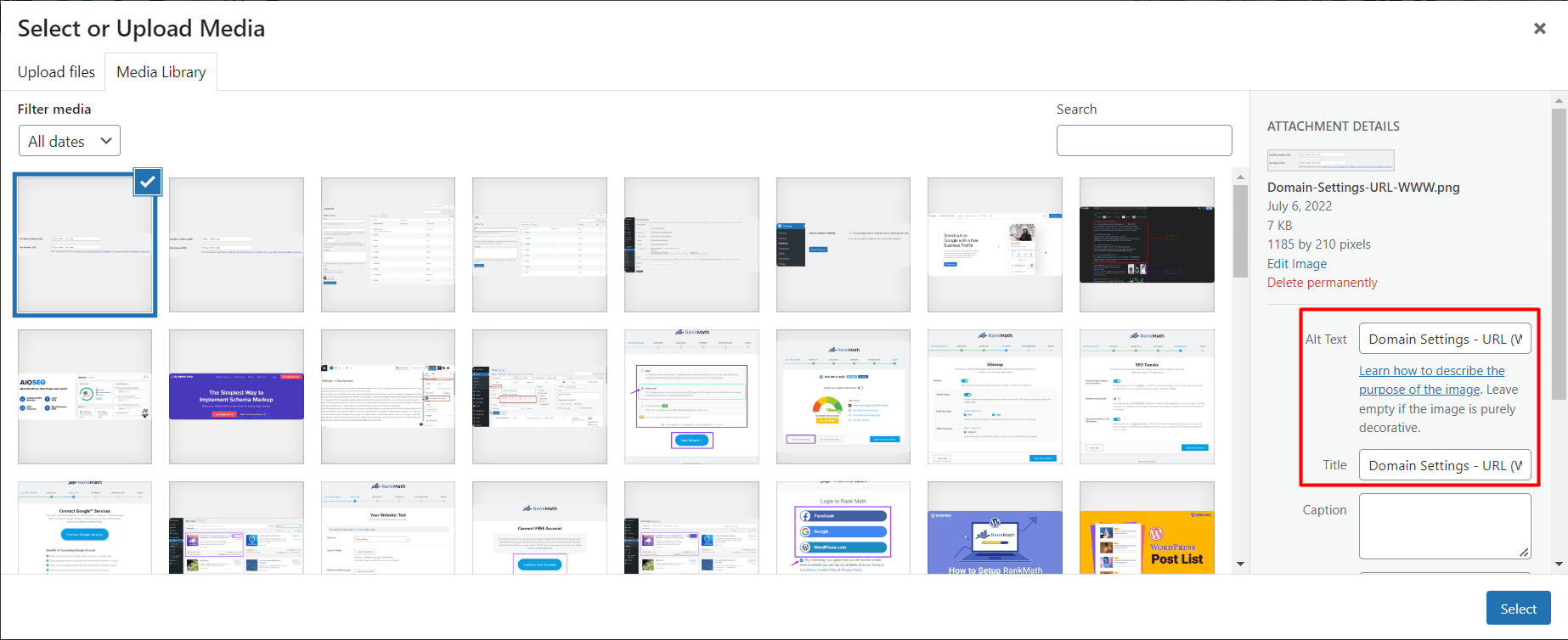
Every aspect of your WordPress site, including the photos, can be fine-tuned for optimal performance. Image-Alt-Text is a practical way to optimize photos.
Search engines evaluate image descriptions (called “Image-Alt-Text”) to assess your site’s images’ relevance to a user’s search query and how high up on the results page they appear.
Using an SEO plugin is the simplest approach to optimize your photographs using Image-Alt-Text. You can also check the features of your existing plugins to see whether they support Image-Alt-Text.
You can provide a detailed explanation by typing it into the “Alt text” field. Using dashes to separate words is recommended when adding Image-Alt-Text with a lengthy description. This will signal to search engines that you’re using several keywords.
A secret tip: You can use an image compressor to compress your image before uploading it to the website. It’ll surely take less space.
Using SSL
Secure Sockets Layer, or SSL, is a standard security protocol for establishing and maintaining an encrypted connection between a server and a browser. SSL is how information transferred between your website and visitors stays safe.
For example, suppose anyone completes your purchase form and provides all their credit card details. In that case, SSL is how companies guarantee a hacker does not capture that information along the route.
Search engines like Google prioritize websites with “safe and encrypted” connections, which is why SSL is beneficial to SEO. For example, Google would give preference in search results to the site that used SSL if there were two similar sites.
Today, WordPress.com takes care of installing SSL for you automatically. However, suppose your website is hosted on WordPress.org, for example, and you’re responsible for its security on your own. In that case, you’ll need to use an SSL plugin.
Managing Security
We’ve already established that search engines favor websites that use SSL certificates, so your site’s authority and ranking will increase if you use this strategy.
Depending on the WordPress package, you may or may not have to worry about security.
Using Nofollow External Links
The more you connect to other sites inside your own site, the more credibility you’ll give yourself. In addition to aiding your own sources or other information you think your readers should check out (by linking to them), you are also providing their authority, or “link juice,” by doing so. External linking is beneficial to search engine optimization (SEO) on both ends: your own and the sites you link to.
These links will protect your WordPress site from content spam and stop search engines from following your links to other websites, which means you will only boost your own site’s authority and rating.
You can either type “nofollow” into the “Link Relationship” form box whenever you add a hyperlink to your keywords or phrases or use the manual method of adding a Nofollow link to your WordPress site.
Optimizing Comments
Using comments on articles is a fantastic method to increase user interaction with your website. More engagement usually boosts search engine optimization through increased clicks, shares, and comments.
Your site’s SEO and page rank might suffer severely if spam was left in the comment section. That’s why it’s essential to filter out the bots and get feedback from actual individuals.
Now that we know the best WordPress SEO practices and how to optimize them, let’s check out some of the top WordPress SEO plugins.
Top 5 WordPress SEO Plugins
Here are the most popular WordPress SEO plugins to boost, organize and manage your site’s SEO.
Yoast SEO

Regarding search engine optimization (SEO), Yoast SEO is one of the most widely used plugins for WordPress.
You may quickly optimize your website by adding meta titles and descriptions to every page and post. It also lets you include social media photos and Open Graph information in your articles.
Yoast SEO makes it simpler for search engines to scan your site by automatically creating an XML sitemap of all your site’s content. It also makes it simple to import your SEO data if you’ve been using a different SEO plugin.
Rank Math

Rank Math is another WordPress SEO plugin that facilitates the optimization of search engines and social media. It has an installation process and supports importing settings from other SEO plugins.
You may use it quickly and enhance your blog entries with Open Graph and standard metadata like titles, descriptions, and keywords. The plugin also enables you to produce an XML sitemap, link Google Search Console, and manage access to plugin capabilities depending on user responsibilities.
MonsterInsights

Many newbies depend on their best estimates to make their marketing judgments. However, you don’t need to do that when you can quickly receive the information you need to optimize your website’s SEO approach.
You can’t go wrong with MonsterInsights if you’re looking for a Google Analytics plugin for WordPress. It makes integrating Google Analytics with WordPress simple. It provides access to reports formatted for human consumption directly from the WordPress administration area.
It provides traffic sources, most-read articles, user actions, and more. You can observe which goods are the most well-liked and where you are losing clients, which is helpful for your eCommerce SEO.
Schema Pro

With Schema Pro, you can enhance your website’s visibility in search engine results by adding rich snippets.
With Rich Snippets, you may highlight specific information about your website in search engine results, such as a review’s star rating, a product’s price, an accompanying picture or video, and so on.
You can also use Schema Pro in conjunction with another WordPress SEO plugin by mapping the information from that other plugin to the appropriate Schema Pro fields.
All in One SEO for WordPress (AIOSEO)
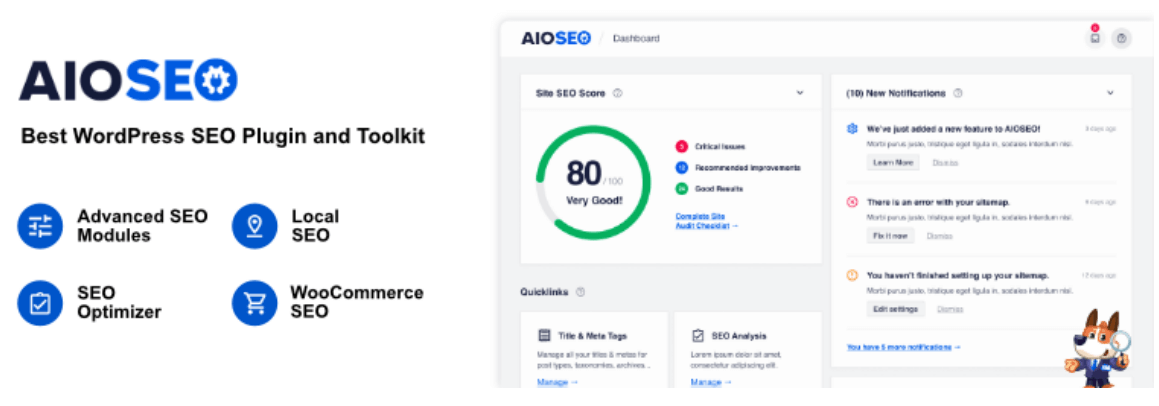
The finest WordPress SEO plugin available is called All in One SEO for WordPress (AIOSEO). It’s the complete SEO toolkit out there, and it’s been used by over 3 million people to boost their search engine ranks without having to learn complex SEO lingo.
It has a simple wizard that does all the hard work for you, guiding you to the optimal SEO configurations for your company. In addition, AIOSEO provides you with a TruSEO on-page analysis and a practical checklist to enhance the visibility of your web content.
Conclusion
We hope you found this article helpful in understanding how to improve the search engine optimization of your WordPress site. You can expect more traffic within several months if you practice even some of these WordPress SEO strategies.

